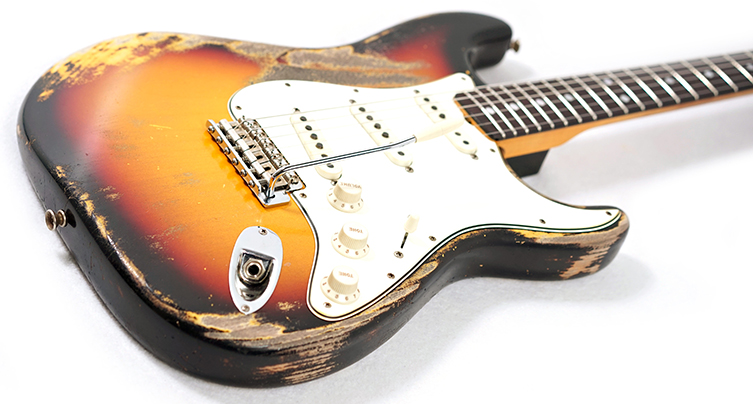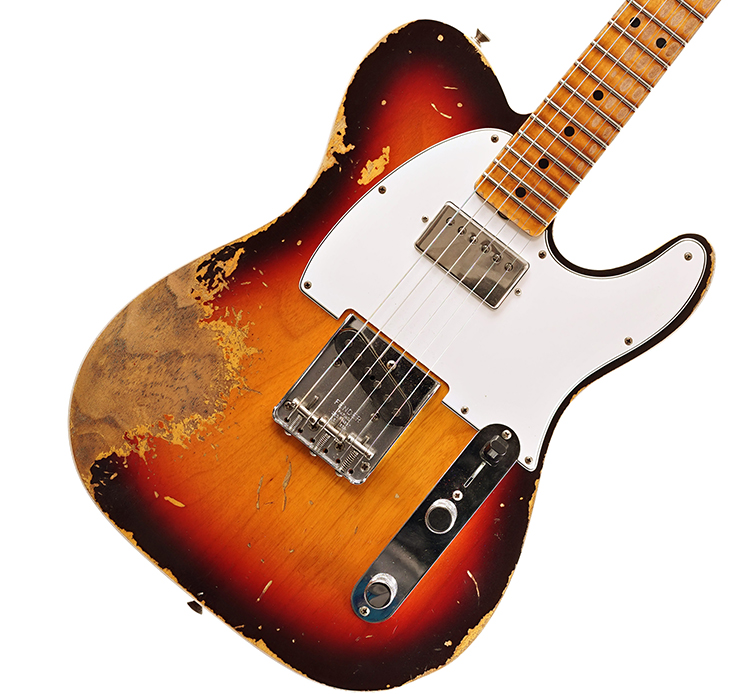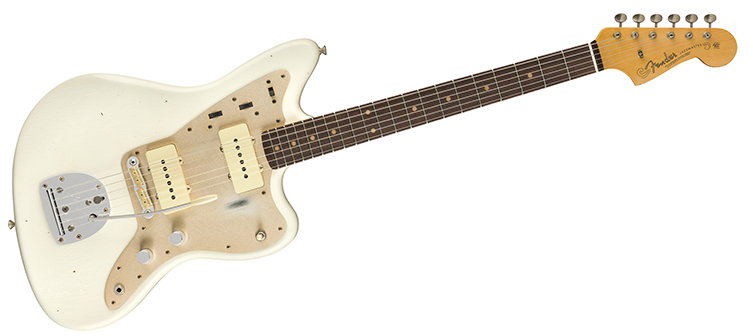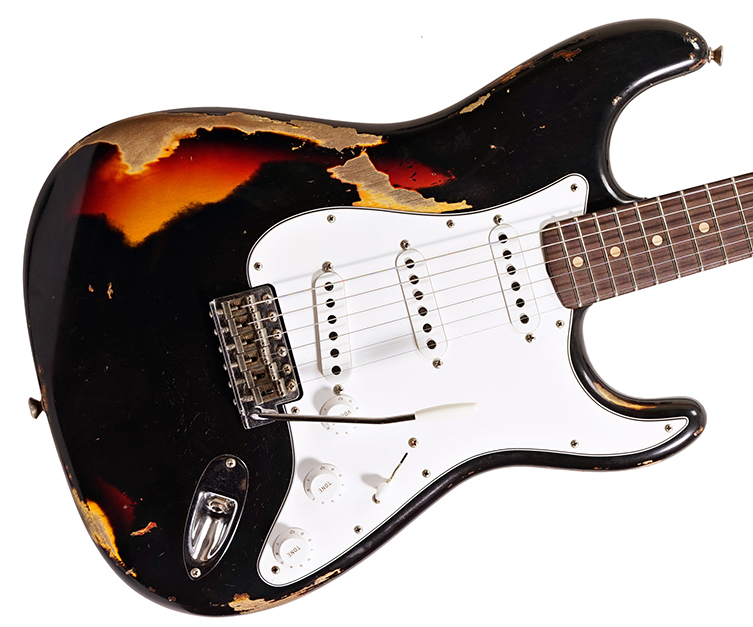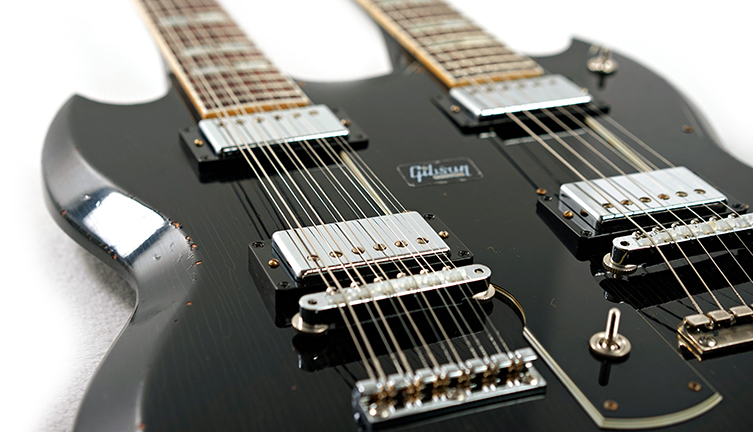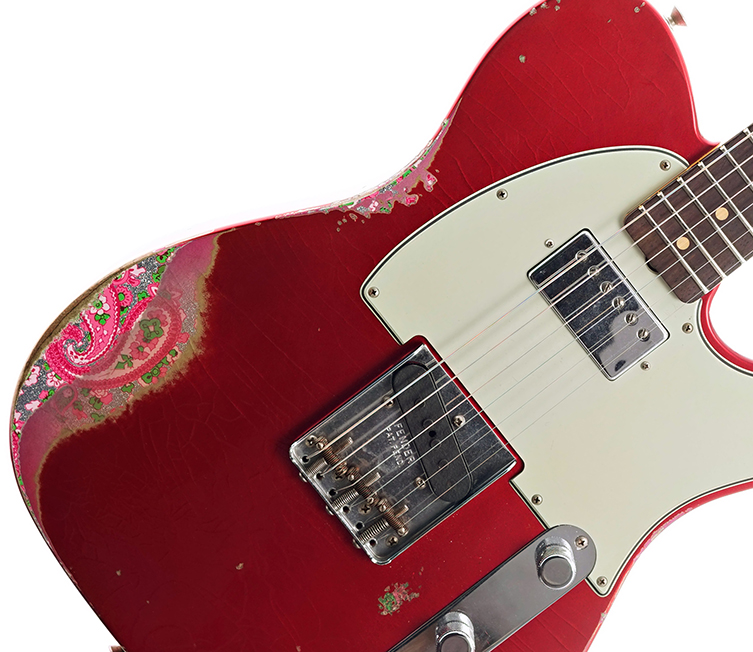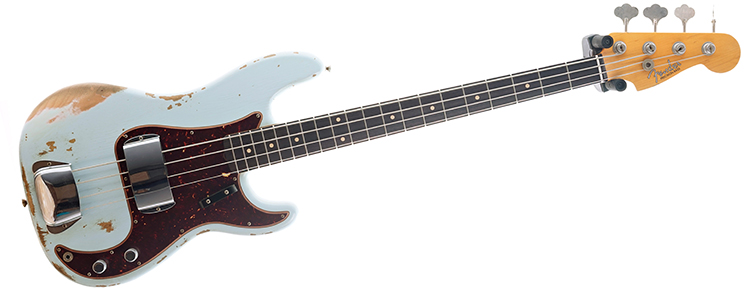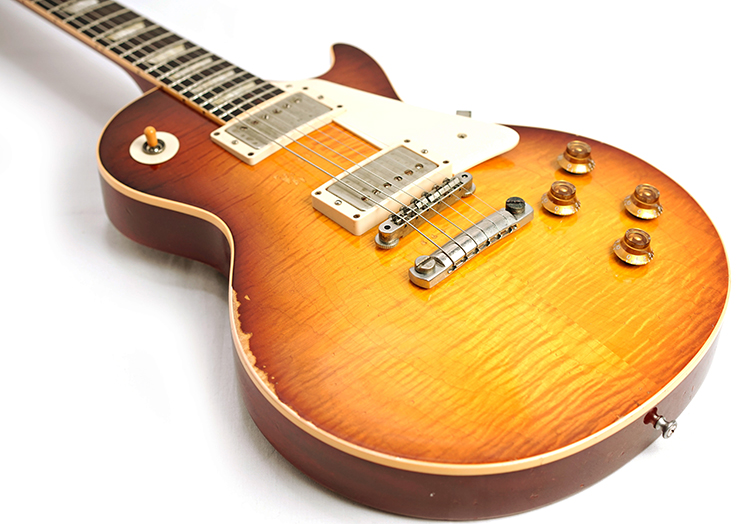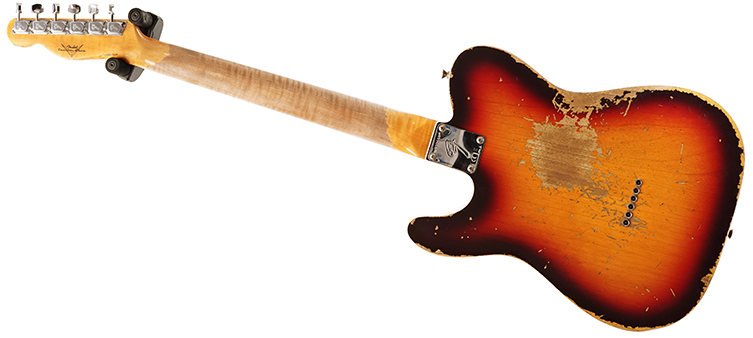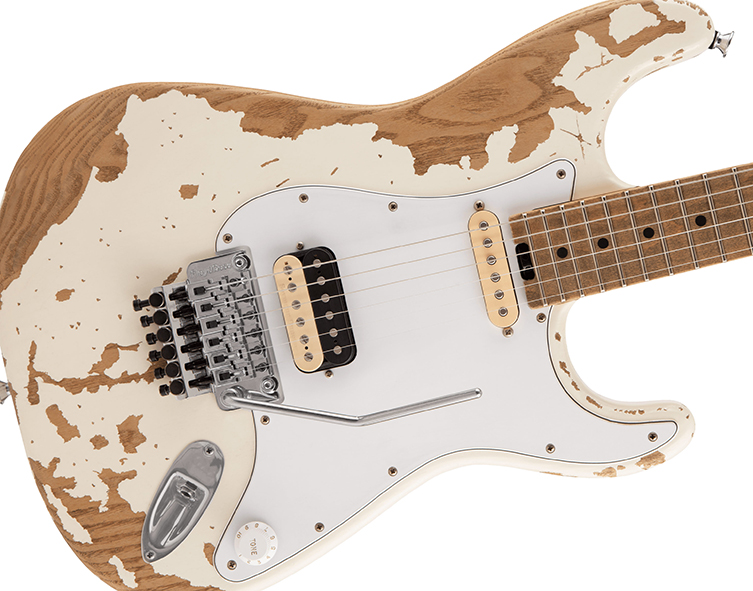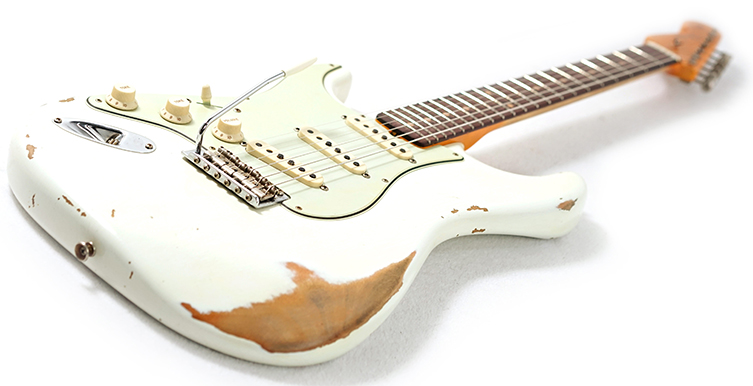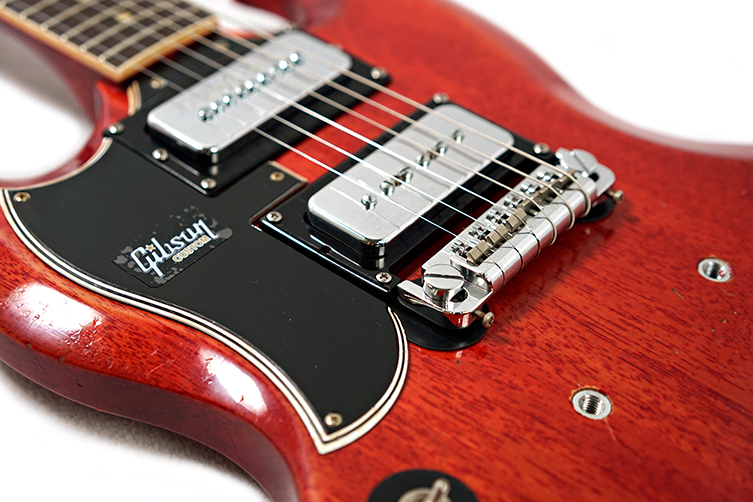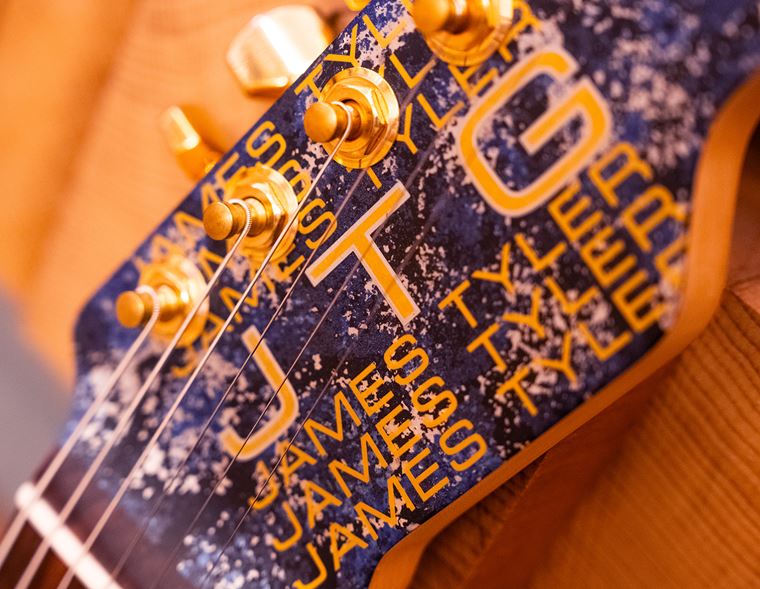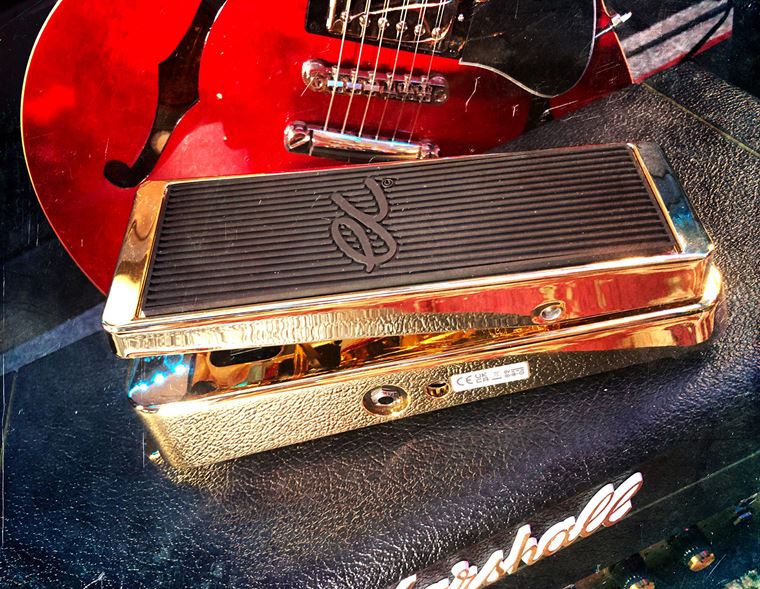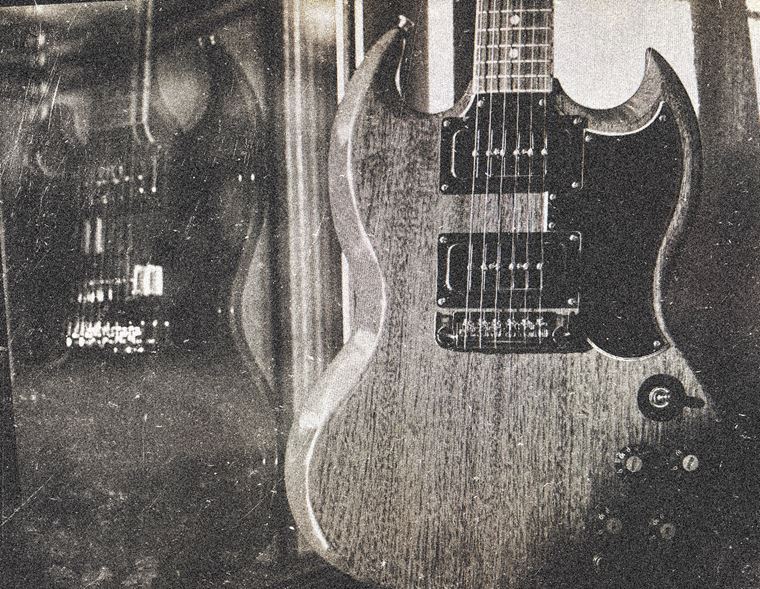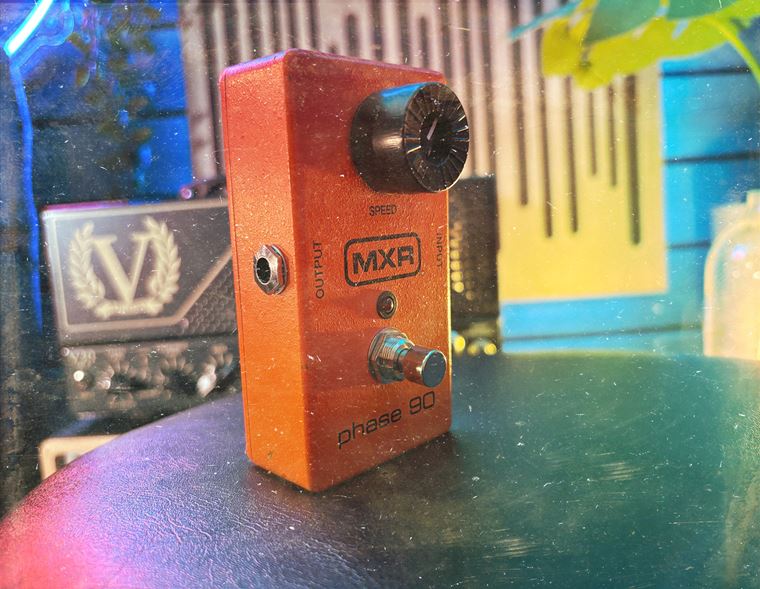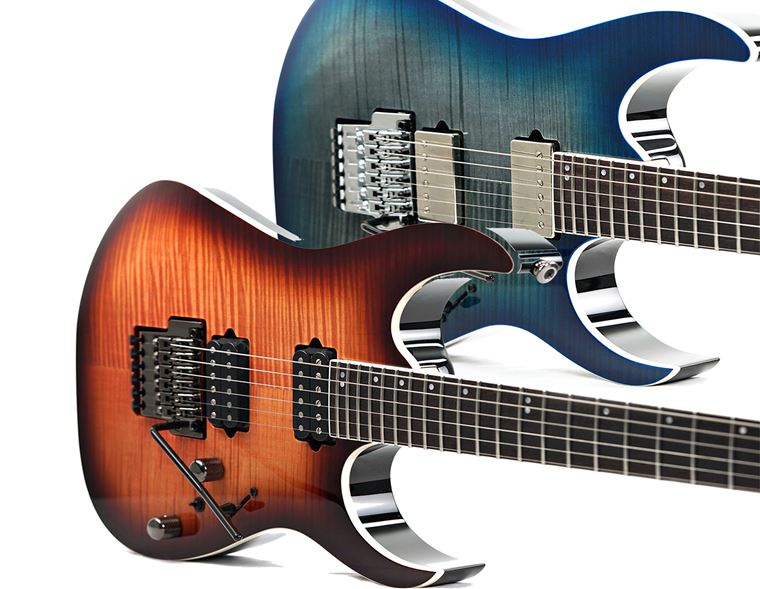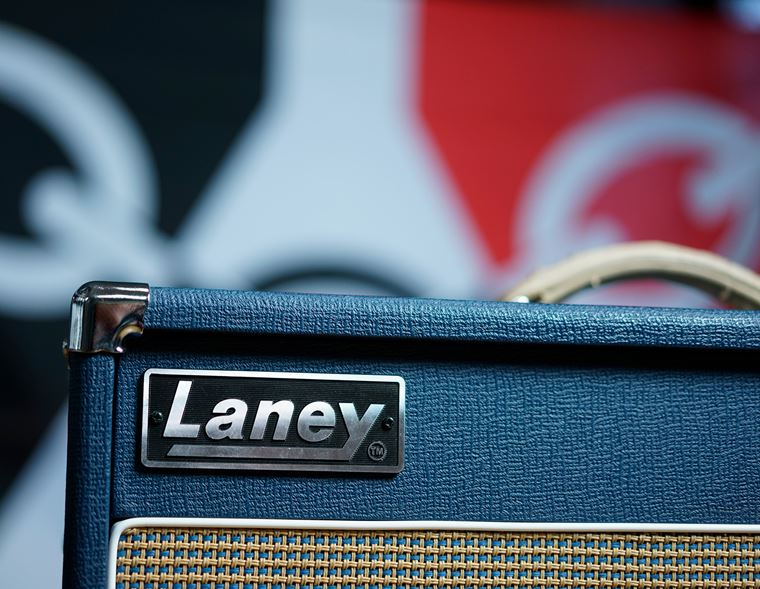Relic Guitars: the Debate
Published on 28 July 2020
Fender or Gibson?
Single coil or humbucker?
Tremolo or Hard tail?
Relic or non-relic?
It’s one of the age-old debates in guitar circles. Relic guitars. Well, it has been since Fender brought the first Custom Shop Relic guitars out in the mid 90s, at least. Before then, there was no precedent to new guitars being sold with dings, chips and cracks all over them.
It was an absurd thought!
But these days, it’s quite standard to have a choice of worn/distressed/battered finishes and hardware, especially with more upmarket and bespoke instruments. Younger players might not even realise that this wasn’t always an option!
Today, we are going to address this debate head on. We are going to look a little at how relic guitars came to be, why you might like them and why you might not. At the end of the day, it’s up to you and your own preferences, really, but it does us good to talk these things out!
It’s Keef’s Fault
That’s Mr Richards to you! But yes, the whole notion of relic’ing guitars was the flippant brainchild of the iconic Rolling Stones axe-slinger. As the (presumably) reasonably true story goes, Richards ordered a slew of new ’52 reissue Blackguard Teles from Fender’s Custom Shop in preparation for a mid 90s Stones tour. Upon delivery, Richards promptly turned his nose up at the pristine masterpieces, refusing delivery and requesting that Fender’s artisans ‘beat them up a bit first and I’ll play them’.
A lightbulb must’ve gone off in some Fender exec’s brain, and the idea spread. So began a new concept in guitar manufacturing: buying a pre-beaten up guitar and paying more for the pleasure. As a concept, it’s pretty mad, given that superficial damage normally makes a guitar’s value drop, not ascend! Still, Fender’s Custom Shop tried the concept out with some tasty mid-90s Stratocasters and Telecasters, just to test the waters.
They became some of their best-selling guitars, not to mention their most headline-grabbing. Some thought it a fad, but here were are, 25 years later, still very much into the relic...
The Relic Guitar
Sticking with Fender for the moment, since they spearheaded the idea, there is now a whole language built up around their relic guitars. You can choose from several levels of severity in terms of how beaten about your prospective guitar is, from ‘Closest Classic’ (hardly touched, just like a neglected instrument from way back when) to ‘Heavy Relic’ (serious disrespect from the fictional previous owners) to even occasionally ‘Ultimate Relic’ (think of Rory Gallagher’s Strat and you’re in the right area). Several levels of deterioration exist in between these extremes, all with quite specific and carefully documented levels of violence to the finish and hardware.
Bear in mind that these are entirely new instruments with new parts and so on.
Nowadays, YouTube will throw up endless videos of Americans in their garages, dropping power tools onto inexpensive instruments in the hopes of recreating that famed look of these Custom Shop relics. It’s nothing like as easy as it looks. We don’t recommend you try it for yourself, frankly, but if you did, you’d notice that merely dinging up the guitar and sanding off some of the finish isn’t enough. These Custom Shop guys go to quite stupefying levels of effort to replicate ‘authentic’ wear, so that only the parts that would get damaged through excessive use in ‘real life’ (you know what we mean) get the wrecking treatment.
And just what is the wrecking treatment? Well, most companies won’t tell you too much, as if it’s some arcane secret, but starting off with a nitrocellulose finished guitar is a good way to begin. Polyurethane finishes just don’t ding up the same way at all. Poly is thick and tough, meaning that you really have to go at it to get anywhere. If you’re sanding it, you’re talking about hours and hours of sanding just to get to the wood underneath. It’s a bit of a mission, and in the end, it just doesn’t look quite right. Nitro finishes are thinner and much more susceptible to damage, meaning that artificial damage is much easier to recreate convincingly.
‘Convincing’ is the keyword there. The difference between a guitar that looks like it’s been played on every night for fifty years, and one that’s been brazenly kicked about the backyard for an afternoon, is pretty obvious. There’s a real art to it. The natural wear and discoloration of nitro plays a big role in that vintage look anyway, even before you start laying into it.
The act of relic’ing a guitar tends to happen after the instrument is built, as it would in real life. Why would there be wear and tear to a bit of the finish that no one ever sees or touches? So, the guitar is put together completely and finished, just like any other instrument. Then the deconstruction begins. Sanding happens, car keys come out of trouser pockets to score finishes, dirt is rubbed into unfinished necks, and metal parts are bathed in acidic solutions to promote rust. Yes, all the things you normally wouldn’t ever want to do with guitars has now become a mini industry! Again, when it’s done right, it’s pretty spectacular, and when it’s done wrong, the results can be kind of embarrassing.
Some guitar makers go to quite extreme lengths to cover the finished wood in anti-freeze and then bake the guitars (just don’t do this at home, okay? Don’t make us keep repeating that...) to get the lacquer crack just right. It does, it looks great. This is why you pay more for a relic! Some other makers go postal on the plastic parts to ensure they discolour properly. It’s a bit intense, but the results do speak for themselves, really.
A relatively recent development is the ‘overpaint’ vibe, where a guitar with a relatively non-historic colour actually has the ‘original’ finish sprayed underneath it. This shows through in all the bits that have worn away. It’s a bunch of extra work, considering that the underneath finish is properly applied to the whole guitar before the other colour coat(s) go on. This is so that, when you inevitably create your own dings in the future (how would anyone know?), the under-finish will appear there, too. It’s pretty ‘meta’ stuff.
One important thing to bear in mind is that the functionality of a relic’d instrument should never be in question. These are new guitars with warranties! So, even if a relic Floyd Rose looks like Mad Max set fire to it in the Outback, it should still move, function and operate as well as a shiny ‘new’ one. This goes for tuners, screws...the whole bit. It’s an illusion, remember?
Okay, so now to weigh up the warring points of view on this topic. We’ll do the yays first, and then the nays...which side will you be on by the end?
The Argument For
Relic finishes look cool. That’s the main reason for a lot of people. As Brass Eye would say, there’s no evidence but it’s a scientific fact. A good relic job looks really cool and Rock n Roll, and it kinda puts you in a bit of an elite, since we all know they aren’t cheap. Cheap relics don’t look too good, so hopefully you haven’t bothered with one of those or (heavens forbid) tried to do it yourself. We told you!
A more substantial, and somewhat less superficial, answer goes something like this...Many top touring players own wonderful vintage guitars. These things are actual museum pieces: proper heirloom guitars that cost the same as houses, literally. Only a psychopath or a buffoon would take actual vintage guitars out on the road these days, especially if there was an option of instead taking a brand new, comparatively much cheaper, guitar on tour that looked, played, felt and sounded just like that unbelievable nineteen-fifty-whatever vintage axe they have. It’s not much of a brainteaser, really. A genuine 1959 Gibson Les Paul Standard could hit you for half a million quid ($400k-700k depending on condition, check for yourself, it’s horrifying). A fantastic brand-new Gibson Custom Shop 59 Historic reissue Les Paul Standard, where they’ve agonised over the type of plastic in the pickguard and gotten Tom Murphy to hand age it, will cost around 6 grand. It’s nearly a hundred times cheaper to get the fancy new Relic than it is to take the old boy out on tour. Everything about it is super similar to the old one, to an infinitesimal degree, apart from its birthday.
Now it’s making sense!
Scarcity is another one. Now, most of us don’t have half a mill to chuck at a guitar, but that’s academic since proper vintage guitars are rarer than hen’s teeth anyway. There were only ever hundreds, or low thousands (depending on which guitar we’re talking about) of these things ever produced back in the golden age, and the majority have not survived the 50-70 years since. Therefore, even if you did have Scrooge McDuck’s bank account, you’d have a hard time locating a peach of a vintage guitar in the first place. Old doesn’t automatically mean good, remember, and many vintage guitars are absolute horrors to play, so you’ll have your work cut out for you finding the good ‘uns that have survived.
How much better to walk into a store and be able to pick from a selection of new instruments that are painstakingly designed after specific guitars that are objectively known to be belters? You can buy a replica of Billy Gibbons’ Pearly Gates, which is the epitome of ‘amazing vintage 59 Les Paul’ and it’s basically perfect. A carbon copy. It’s a ridiculously good example of that mythical Les Paul magic. You can have it. It’ll cost you, but it’s a tiny speck of a percentage of the value of the actual Pearly Gates. Lets’ face it, Billy Gibbons probably plays one of these replicas! (lawyers’s note: we have no idea what Billy Gibbons really plays). So, what are you really missing out on? You’ll still be playing one of the best guitars ever made, it just hasn’t been lying around for 60 years getting beer spilled on it.
Some people complain about the marks and dings of a relic guitar. They say, ‘I want to be the one who makes the scratches and chips, it’s part of my history with the guitar and it’s authentic. It’s me who put the scratches there’. Fair enough, but only if you bought the guitar from brand new and have been super clumsy with it. Otherwise, if you buy a second-hand guitar, those chips and scratches were put there by a previous owner. Double standards? Also, it’s a minor point, but if you like the look and feel of worn-in guitars, this is the only way you’ll get them fast. Who has 40 years to wait until it happens ‘naturally’?
Okay, those are most of the points in favour of relic finishes. Now let us jump ship and see how things look from the anti-side...
The Argument Against
Well, you might think it looks rubbish. It may disgust you to shell out considerable stacks of your hard-earned on something that looks like it’s been left in Chernobyl since 1986. We understand that. Who are we to disagree? It could actually be a generational thing, but more mature customers seem to prefer their guitars to come pristine instead of battered. For some, there’s an association that the marks and scratches taint the instrument somehow, and make it feel like it isn’t the brand-new, straight off the workshop guitar that it really is. Perception plays a huge factor in this emotional business of buying guitars. We attach a lot of feelings to these chunks of timber, and seeing them all dented and defaced is just too much for some players.
There are other considerations. We’ve heard true tales from gigging players about turning up to a wedding gig with a just-bought Relic Strat, only to be harangued by the mother of the bride for daring to show up with a ‘dirty guitar’! How dare you! Has this happened to you? Did you ruin their special night? That would be enough to make you think twice, surely. Terrifying scenes.
Many anti-relicers also think there is a distasteful level of artifice to such instruments. They think it’s fake, phony and poser-ish to choose a pre-smashed guitar since it implies that you’ve served more time in the trenches than you really have. You haven’t earned your stripes (scratches). For them, it’s perfectly okay to buy a vintage reissue instrument (or indeed an actual vintage instrument, since that trumps everything), but opting for the vintage reissue with simulated wear is a step to far. It’s almost like playing a Gibson guitar with a Fender strap! Unforgivable!
Artist models
The only area that seems to fully get away from criticism is Artist models. Typically, these are recreations of notable instruments from some rock star’s career, so the scrapes and dents are all historically verifiable and loved by the fans. We’re talking Clapton’s ‘Blackie’, Andy Summers’ Tele, the aforementioned Pearly Gates, Eddie’s Frankenstein and all the rest. Since these are actual replicas, it seems that relic finishes on them are permissible to all, as long as they properly match up with the original. Van Halen fans get it the most: you can buy Eddie’s guitar in different phases of its life, from the original black and white finish to the added red iteration and also the properly junked up final look!
Similarly, fans will pay more to have ‘Iommi’ etched into the back of his SG’s control plate, as long as it looks just like he did it. It’s no good if it isn’t exactly alike (which it is, to be honest: it’s pretty gobsmacking). It’s about getting closer to the magic, basically.
Final Thoughts
We all love a bit of magic, and guitars bring that into our lives on a daily basis. Whatever helps align you with the stuff that stirs your soul is what we think you should aim for, always. We personally like relic guitars, when they are done convincingly. We have played vintage originals and relic reissues, and whilst we’ll keep our opinions on the differences to ourselves, we would say that it just comes down to a matter of taste and personal preference in terms of feel, response, sound and so on.
What we will also say is that we believe the guitars being made today are, on the whole, a good deal better than they ever had been in the past, including those glory years of the 50s and 60s. A new Relic reissue is a less valuable guitar than a vintage equivalent, but it is not by any means second best as an instrument. That would be up to you, the player. So, to sum things up, we think that, whether you choose bashed, super-bashed or entirely un-bashed, you are able to get some of the very best guitars in the history of the world right now. It’s a great time to be a guitar player.
Thanks for reading
Ray McClelland

